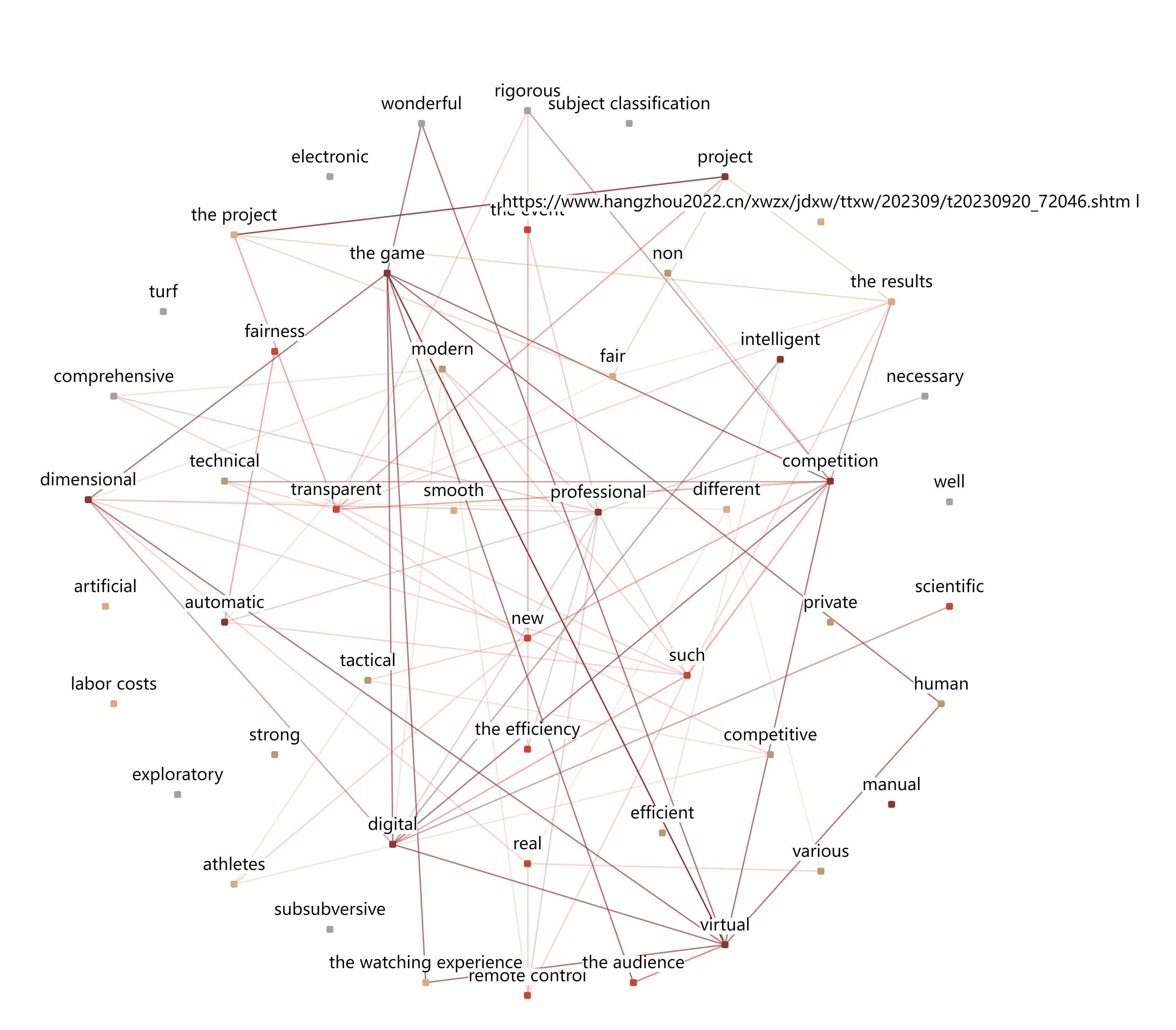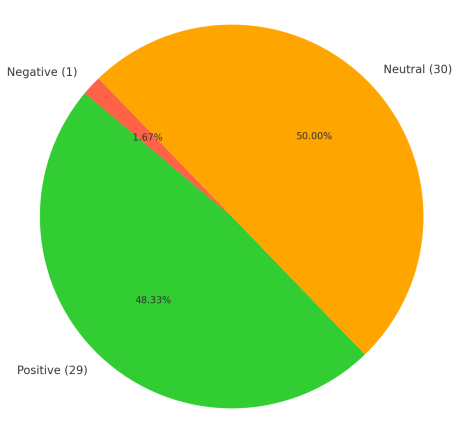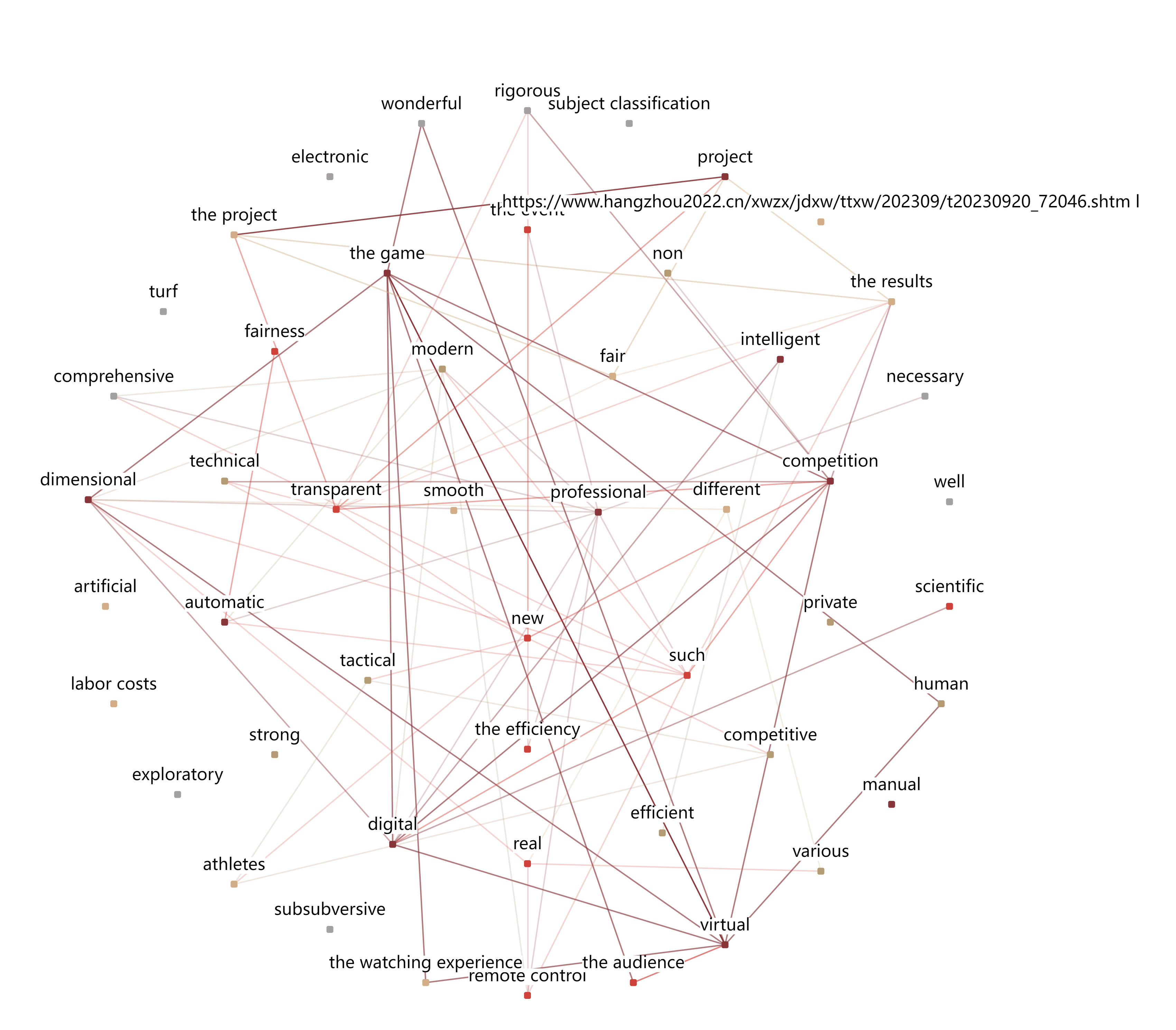1. Introduction
The advent of Artificial Intelligence (AI) has profoundly influenced the sports industry, shaping the dynamics of nearly all major sports disciplines. AI's role in contemporary sports, such as basketball, tennis, and football, is well-documented, with numerous examples and empirical data underscoring its effectiveness. For instance, AI-driven technologies like Hawk-Eye in tennis and goal-line technology in football have significantly enhanced the precision and fairness of officiating. Additionally, AI-based training systems have contributed to the optimization of athlete performance by delivering real-time feedback and personalized training programs.
However, the application of AI in traditional sports remains limited. Despite their rich cultural and historical significance, traditional sports have yet to fully integrate AI technologies. This underutilization may contribute to their diminishing influence in the modern era, as they lack the technological advancements that have become standard in more mainstream sports. The objective of this paper is to explore the potential of AI in revitalizing traditional sports. By identifying points of convergence between AI and traditional sporting events, this research aims to propose strategies that can optimize and potentially transform these sports through the application of AI.
Previous research has predominantly focused on AI's role in mainstream sports, with little attention given to its impact on traditional sports. This paper seeks to address this gap by investigating how AI can be effectively integrated into traditional sports, thus contributing to both academic understanding and practical applications in this field.
In summary, this study will begin by reviewing the existing literature on AI in sports, followed by an investigation of specific cases where AI has been, or could be, applied to traditional sports. Finally, the study will propose recommendations for future integration. Through this exploration, the aim is to demonstrate the potential of AI not only to preserve but also to enhance the cultural heritage inherent in traditional sports.
2. Literature Review
Initially, a total of 105 articles were identified in the Web of Science database using the keywords "AI" and "traditional sports." The search was then refined by selecting English-language publications. Prior to 2016, 63 articles were found in disciplines such as computer science, sports science, physical education, and related fields. Additionally, searches were conducted on the CKNI and Sci-Hub platforms. After thorough reading and screening, 23 articles were deemed relevant for studying AI in sports or traditional sports.
In recent years, as AI technology has matured, an increasing number of sports disciplines have integrated AI into various aspects of practice. However, the majority of research on AI in the sports field has focused on areas such as instruction and feedback, with limited attention given specifically to traditional sports. Nevertheless, the significance of AI's role in the broader sports domain cannot be overlooked.
The reviewed literature demonstrates that AI has significantly enhanced sports through various applications. Referee support, such as Hawk-Eye in tennis and goal-line technology in football[1][2], provides clear examples of AI benefiting sports. Additionally, AI techniques are widely used in support services for sporting events, including broadcasting, enhancing spectator experiences, and even the betting industry[3]. These successful implementations highlight the necessity of integrating AI into sports events.
According to related research, AI is defined as the science and engineering of designing and building intelligent agents—systems capable of perceiving their environment and taking actions to maximize their chances of success[4]. AI's contributions to sports rehabilitation, pre-competition planning, match prediction, and training intervention are particularly notable. However, research and literature on AI's role in traditional sports remain limited, especially in disciplines with strong national historical and cultural significance, such as martial arts, kendo, and Chinese wrestling.
Therefore, the primary motivation for conducting this research is to identify the convergence between AI and traditional sports, with the aim of leveraging AI's powerful capabilities to optimize and potentially transform these traditional sports. This study seeks to explore how AI can be utilized to preserve the cultural essence of these sports while enhancing their relevance and adaptability in the modern era.
In the early study of traditional sports, terms such as "traditional sports" and "traditional games" were commonly used. According to Van Mele, traditional sports are recreational activities with distinct local cultural characteristics, rooted in the traditional lifestyles of the people [5]. Some Chinese scholars define traditional sports as diverse, culturally rich, and locally unique sporting activities and fitness practices developed by various ethnic groups through labor and daily life. Other scholars view traditional sports as activities passed down through generations within specific regions or ethnic groups, suggesting that folk sports often overlap with or are closely related to traditional sports[6][7].
Bjelac further defines traditional sports events as characterized by creative and complex sports-like, recreational activities with an entertaining nature[8]. These activities are performed according to a predetermined program and generate significant social and economic benefits for the regions where they are held, often attracting tourism. Based on these perspectives, traditional sports events can be defined as organized, profit-oriented competitions that represent the history and culture of different nations through the coordination of one or more specific sporting activities.
In general, Artificial Intelligence (AI) refers to the simulation of human intelligence processes by machines, in contrast to human and animal intelligence. Today, various types of AI are in use, often with considerable overlap between them. Examples include reactive machines, deep learning, natural language processing, and robotics, among others. Many AI systems integrate multiple types of Artificial Intelligence to function effectively [9].
Compared to modern commercial sports competitions, traditional sports events often retain their original rules and regulations and rely more on traditional methods of judgment. For example, in martial arts routines, judging is heavily influenced by the subjectivity of the referee, and there is a lack of objective scoring systems that incorporate AI and other advanced technologies.
3. Method
3.1. Case Study
Following the review of the definitions of AI and traditional sports events, along with the related literature, this study employs the Asian Games as a case study. The analysis explores the background, current development status, and existing challenges of its related events, providing valuable data and material support for research on the integration of AI into traditional sports events. This case study aims to offer insights and potential strategies for further investigation into the development of AI applications in traditional sports, contributing to the formulation of future development strategies.
Through an examination of the official website of the Asian Games, it was observed that the main page lacks a search bar, making it cumbersome to locate specific traditional sports events. To address this, a targeted search was conducted using the Asian Games website URL (https://www.hangzhou2022.cn) combined with specific terms, such as "AI," "intelligent," "impartiality," "traditional project," "decision," and "black technology."
After several rounds of searches, it was found that there was little difference in results for many similar terms, such as "traditional project" versus "project" or "artificial intelligence" versus "technology." Therefore, keywords that generated more relevant results were ultimately chosen to avoid repetition of content. In total, 6,622 results related to intelligence were identified, with more than 4,000 results specifically containing the term "AI." Table 1, please find the detailed search results.
Table 1: Search Results.
subject classification | feature | act on | text | Article link |
Prepare for the game | Subsubversive, auxiliary | Improve the efficiency and help to prepare for the games | AI has long since become a necessary tool for the training of professional chess players, where chess players calculate and judge their chess layout through AI to increase their chess power | https://www.hangzhou2022.cn/xwzx/jdxw/ttxw/202310/t20231004_73503.sht ml |
Prepare for the game | Auxiliary, intelligent | Improve your skills and tactics, and break your records | Assist in-depth tactical mining, fully support athletes in the door of the field to achieve new breakthroughs in competitive performance | https://www.hangzhou2022.cn/xwzx/jdxw/ttxw/202304/t20230404_58347.shtm l |
project | Fairness, rigor | Promote the fairness and justice of the penalty results, more scientific than manual scoring | The badminton hall is equipped with 204K HD cameras and 1 VR camera to freeze the movements from different angles and generate 360-degree playback effects. Through AI infrared tracking technology, each movement of the player is converted into three-dimensional images in real time, and analyze and score the various body parameters and movement angles | https://www.hangzhou2022.cn/xwzx/jdxw/ttxw/202309/t20230920_72046.shtm l |
project | Automation, speeding | Reduce the speed and double the speed | Thanks to the AGIS private network, the upload can be completed in milliseconds | https://www.hangzhou2022.cn/sckf/202307/t20230721_64823.shtm l |
project | Intelligent, efficient | Save labor costs, to attract traffic | Electronic dogs instead of artificial discus | https://www.hangzhou2022.cn/dgyy/spsb/202310/t20231002_73289.shtm l |
project | The process is smooth and automated | Ensure the competition process, and use non-manual intervention to reduce the error rate of athletes | The "grass strong" of the turf field has the characteristics of trampling. The site is also newly equipped with an automatic sprinkler irrigation system and an intelligent drainage system | https://www.hangzhou2022.cn/xwzx/jdxw/ttxw/202306/t20230629_63267.shtm l |
project | Fairness, improve efficiency, automatic division of labor | Make the penalty process transparent, the results are fair, and ensure the integrity of the project before and after the project | The competition operation team used new management methods and technical means in the competition to assist the rigorous and transparent decision. | https://www.hangzhou2022.cn/xwzx/jdxw/ttxw/202301/t20230102_54826.shtm l |
Competition | Interactivity, exploratory and intelligent | Better interaction with the audience, improve the quality and perception of the event | It is understood that the Asian Games will open up an e-sports competition yuan universe space, so that the audience avatar virtual people, in the virtual world to watch the game. During the halftime break of the game, the characters in the game will also become dancers through three-dimensional virtual digital human technology, bringing wonderful performances to the audience and enriching the watching experience. | https://www.hangzhou2022.cn/xwzx/jdxw/ttxw/202308/t20230825_70374.sht ml |
Competition | Artificial intelligence, save labor costs, compress time | Promote the efficiency of the event, ensure the event infrastructure, reflect the level of professional automation | Build the three-dimensional supervision system and the operation management system of the drainage station, so as to achieve the modern and digital requirements such as operation data tracking, remote control of water level balance and data storage, so as to realize the automatic and comprehensive supervision of the dragon boat sports base and improve the professional, fine and standardization level of management | https://www.hangzhou2022.cn/xwzx/jdxw/ttxw/202306/t20230629_63267.sht ml |
Competition | Automatic analysis, wide coverage, detail | Strengthen the viewing experience, improve logistics, and replace manual solutions that require a lot of computing | Asian games equestrian intelligent system " established a full range of horses digital archives, the horse health, quarantine sampling, stable area pest treatment, feed forage inventory, dosage data digital processing, provide information support for the Asian games football stadium lawn, Wenzhou sports center stadium installed 18 sensors, the lawn root temperature, humidity, acidity and nitrogen and phosphorus potassium content and the lawn surface light intensity data collection and analysis, realize the scientific maintenance of the lawn. | https://www.hangzhou2022.cn/xwzx/jdxw/ttxw/202309/t20230901_70882.shtm l |
Competition | Remote control, real-time performance, | Enrich the watching experience, improve the fluency of the watching, and enhance the audience adhesion | On the competition side, the digital competition service platform "Hangzhou Asia Operation" can query the results of — mobile phone with one click, and the participants can get convenient and intimate "fingertip service" such as news information and translation hotline anytime and anywhere | https://www.hangzhou2022.cn/xwzx/jdxw/ttxw/202309/t20230920_72046.shtm l |
3.2. Result
After analyzing the data using a professional word frequency analysis tool (Weiciyun), the results indicate that out of 649 words, there are 60 unique entries, 317 valid words, and a word density of 48.84%. In the word list, terms such as "improve," "speed," "prepare," "ensure," and "break" appeared with relatively high frequency. In the adjective list, words like "digital," "intelligent," "automatic," "virtual," "professional," and "auxiliary" were particularly prominent, with a positive sentiment ratio reaching 48.33% (Figure 1).


Figure 1: Word Frequency and Sentiment Analysis Based on Word Frequency (First Analysis)
To ensure the reliability and generalizability of the findings, the original document prior to table generation was used as a control group and also subjected to word frequency analysis. This second analysis, of 3,097 words, revealed 30 unique entries, 829 valid words, and a word density of 26.77%. In the feature word list, AI-related terms were selected, excluding prepositions and place names. The top three words by frequency were "intelligence," "technology," and "digital." In the adjective list, the most frequent were "intelligent," "digital," and "real," while the top three verbs were "help," "experience," and "improve." The positive sentiment ratio in this analysis reached 70% (Figure 2).


Figure 2: Word Frequency and Sentiment Analysis Based on Word Frequency (Second Analysis)
Based on these two analyses, combined with case studies, it is clear that AI plays a supportive and positive role in the sports industry, significantly enhancing project development, event preparation, and the execution of sports events.
3.3. Case study result
Since 92% of the search results pertain to the organization, management, and operation of events, a total of 11 representative articles were identified and categorized into three groups: events, preparations, and projects. The selection criteria were based on over one million clicks, with the search results highly correlated with the keywords used. For instance, when searching the website with terms such as "AI," "e-sports," and "penalty," results with two or more highlighted terms (marked in red) indicated a strong relevance to artificial intelligence and the event itself. These included five events, five projects, and two preparation games.
There were few cases directly related to the impact of AI on traditional sports events. Most examples pertain to AI providing technical support for mainstream and emerging sports, such as football, basketball, table tennis, and e-sports, rather than traditional sports.
3.3.1. The Role of AI in Enhancing Competition Preparation
In the context of competition preparation, AI's auxiliary features play a crucial role in assisting athletes during training. Not only does AI improve training efficiency, but it also helps in reconstructing tactical systems and pushing athletes to exceed their previous performance limits. For instance, AI has become an indispensable tool for chess players, enabling them to calculate and evaluate moves and strategies to enhance their skills. Similarly, a big data analysis and decision-making platform developed for table tennis players utilizes a tactical visualization analysis system to deeply explore strategies, providing substantial support in their competition preparation.
3.3.2. AI's Role in Enhancing Accuracy and Fairness in Sports Events
In sports events, AI contributes to scientific rigor and fairness by improving the accuracy, transparency, and fairness of scoring while also significantly reducing the time required for score calculation. For example, during the Asian Games, the badminton venue was equipped with 20 4K high-definition cameras and a VR camera to capture athletes' movements, generate 360-degree surround images, and employ AI for judging and scoring. Additionally, AI infrared tracking technology was utilized to analyze and score performances, significantly reducing misjudgments and the time needed to finalize scores.
3.3.3. AI's Impact on Event Management and Spectator Engagement
In sporting events, AI's automation and intelligence have significantly improved the efficiency of event management processes. Additionally, AI has enhanced the overall quality of events and improved the spectator experience. During the Asian Games, for instance, a dedicated esports metaverse space was created, where in-game characters were transformed into dancers through three-dimensional virtual avatars during intermissions, providing entertainment for the audience and increasing engagement.
In summary, AI has a significant optimizing effect on sports competitions, assisting organizers and management personnel in efficiently overseeing the entire event process. It enhances various aspects of competitions, including post-game feedback and audience engagement. For athletes, AI contributes to better preparation, helping them overcome technical barriers and achieve new records. Additionally, AI plays a crucial role in data processing, replacing manual labor in handling complex and large-scale calculations. Through advanced technologies, AI also aids referees in delivering fair and accurate judgments during games.
4. Insights to traditional sport event
In the above analysis, AI's role primarily benefits modern competitive sports, particularly in event preparation and execution. However, the application of AI can be adapted to traditional sports disciplines as well. Due to the inherent differences between these sports, applying AI to traditional sports requires careful redesign and consideration. For instance, in the preparation and execution phases, traditional sports such as Wushu and Chinese wrestling lack established AI systems and platforms. Implementing AI in these areas would require substantial investment and effort. Additionally, the limited global popularity and international reach of many traditional sports, which often do not attract sponsors or markets, is a key reason for the relatively low investment in and application of AI within these disciplines.
AI's precision and fairness could greatly assist traditional sports in achieving more objective scoring. For example, in Wushu competitions, scoring in Groups A and B often depends on the subjective evaluations of judges, without a unified standard. The integration of AI could introduce standardized decision-making processes and automated scoring systems, enabling judges to evaluate performances more accurately. This would, in turn, enhance the fairness and transparency of competition outcomes.
5. Conclusion
This paper explores the role and impact of AI in the field of traditional sports through a qualitative case study of the Asian Games. By analyzing modern sports events, it provides development suggestions for integrating AI with traditional sports. The study addresses a significant gap in the application of AI to traditional sports, a field that has been notably underexplored. Furthermore, the paper offers specific recommendations on how AI can be better integrated into traditional sports, potentially modernizing these disciplines. It is recommended that future research adopt a dynamic perspective to explore the interaction between AI and sports more deeply, in order to optimize this relationship.
On a practical level, this study provides guidance on how traditional sports can better integrate AI by selecting appropriate technologies, promoting the development of these sports, and overcoming existing technological barriers. Through case studies and literature analysis, it offers both theoretical and practical foundations for the application of AI in the sports industry, particularly in traditional sports. However, the case analysis is limited by its focus on a single major event—the Asian Games—which may affect the generalizability of the findings. Future research should consider more global events, such as the Olympics, to enhance the applicability of the results.
Additionally, the literature review did not include the most recent studies from 2022-2024, meaning that cutting-edge research was not incorporated. Given the rapid evolution of AI technology, future AI features and applications may have more profound effects on traditional sports, which were not fully captured in this study. Future research should focus on the ongoing evolution of AI and its long-term impact on traditional sports to ensure that research aligns with technological advancements. This study aims to offer a fresh perspective on the modernization of traditional sports and promote the broader application of AI technology in this field.



